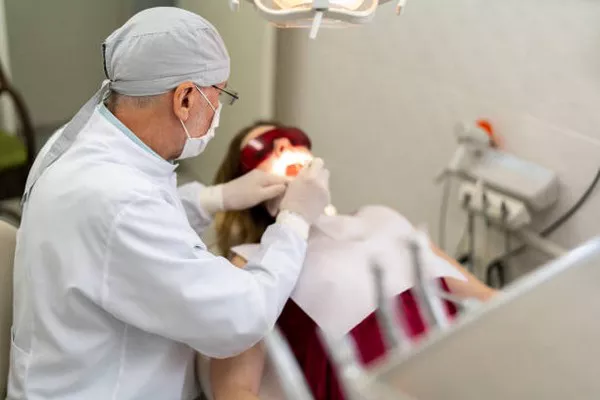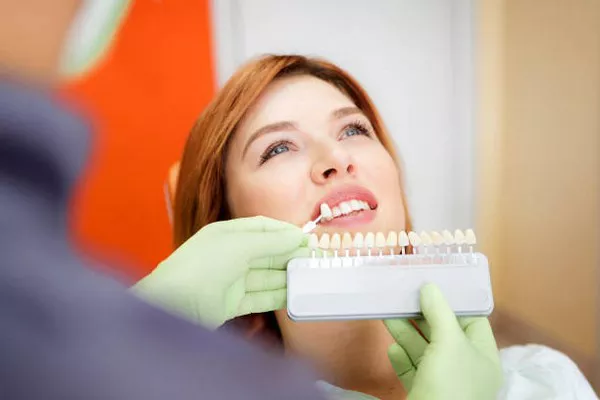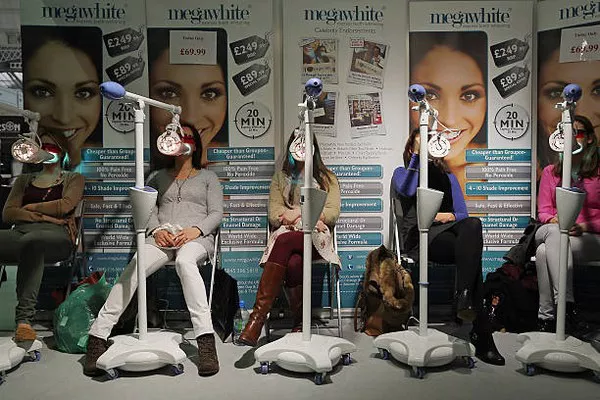A bright, white smile is often associated with health, youthfulness, and beauty. As a result, teeth whitening has become increasingly popular over the years, with many individuals seeking out different methods to achieve a brighter and more attractive smile. One of the most popular methods is teeth whitening with LED light.
LED teeth whitening promises fast and noticeable results, making it an appealing option for those looking to whiten their teeth quickly and conveniently. However, there are concerns regarding the safety of teeth whitening with LED light, which this article seeks to address. We will explore the different aspects of teeth whitening with LED light and evaluate the evidence surrounding its safety.
How does teeth whitening with LED light work?
Teeth whitening with LED light involves applying a hydrogen peroxide gel to the teeth and exposing it to LED light. The light activates the gel, causing a chemical reaction that breaks down the stains on the surface of the teeth.
The light used in LED teeth whitening is typically blue or UV light, which is absorbed by the chromophores in the hydrogen peroxide gel. This absorption creates a photochemical reaction that generates free radicals, which break down the stain molecules on the surface of the teeth. This process typically takes around thirty minutes to an hour, depending on the severity of the staining.
Is teeth whitening with LED light safe?
While teeth whitening with LED light is generally considered safe, there are some potential risks associated with the procedure. One concern is tooth sensitivity, which can occur during or after the treatment. This sensitivity is typically temporary and can be managed with desensitizing agents.
Another concern is gum irritation, which may occur if the gel comes into contact with the gums. However, most LED teeth whitening kits come with custom-fitted trays that help prevent this from happening. Additionally, there is some evidence to suggest that high-intensity LED lights could damage the enamel of the teeth, but this risk is low when using products that comply with regulatory standards.
It’s important to note that the safety of teeth whitening with LED light largely depends on the quality and type of product used. Consumers should always look for products that comply with regulatory standards and are sold by reputable manufacturers. Additionally, individuals with sensitive teeth or certain dental conditions may not be eligible for teeth whitening with LED light and should consult with their dentist before undergoing the procedure.
What should you consider before undergoing teeth whitening with LED light?
Before undergoing teeth whitening with LED light, several factors should be considered. First, it’s crucial to consult with your dentist to ensure that you are a suitable candidate for the procedure. Individuals with sensitive teeth or certain dental conditions may not be eligible for teeth whitening.
Additionally, it’s important to choose a reputable and trustworthy product that complies with regulatory standards. Consumers should research the product and manufacturer before purchasing, paying attention to any reviews or complaints from previous users.
Finally, it’s essential to be prepared for potential side effects, such as tooth sensitivity or gum irritation. While these side effects are typically temporary, they can be uncomfortable and even painful. It’s recommended to use desensitizing agents before and after the treatment to minimize the risk of tooth sensitivity.
Alternatives to teeth whitening with LED light
For those who are concerned about the safety of teeth whitening with LED light, several alternative options are available. One option is using over-the-counter whitening products, such as whitening toothpaste or strips. While these products may not be as effective as LED teeth whitening, they are generally considered safe and can produce noticeable results over time.
Another option is having your teeth professionally whitened by a dentist. This procedure involves applying a stronger bleaching agent to the teeth and using ultraviolet light to activate it. While this option may be more expensive than LED teeth whitening, it is generally considered safe and can produce long-lasting results.
Conclusion
Teeth whitening with LED light has become a popular choice for individuals seeking a brighter smile. While there are some concerns surrounding its safety, the risks are generally low and can be managed with proper precautions. Before undergoing teeth whitening with LED light, it’s important to consult with your dentist, choose a reputable product, and be prepared for potential side effects. For those who are not comfortable with this procedure, several alternative options are available that can produce similar results. Ultimately, the decision to undergo teeth whitening with LED light should be made after careful consideration of all options and potential risks.
Related Topics:






























